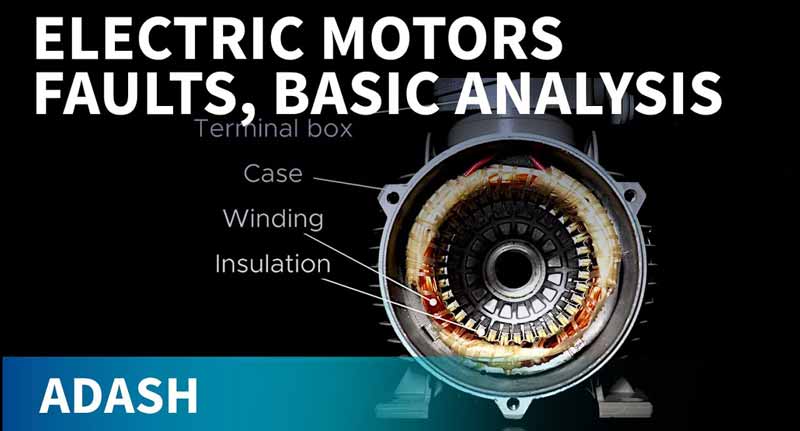Bearings analysis: Principle and weirdness of signal demodulation
11.03.2021
In this video we will explain vibration signal demodulation for bearings analysis and explain some weird features of demodulation.
We will talk about measurement of bearing condition. It is usually based on fault frequency analyzing. What is it the fault frequency?
Let’s suppose, there is pitting on the outer race. Every ball passing through pitting causes the short vibration shock.
Let’s suppose, that just one crack exists on outer race. According the speed frequency we get the time interval T between shocks.
It is the repeating time between shocks. In our example T is equal 0.1 second.
The value equal one divided by T is the repeating frequency of shocks. This frequency we label as fault frequency. In this example it is the outer race fault frequency.
The users often think, that accelerometer must measure the fault frequency, which can be very low. Absolutely not, it is a big mistake. This spectrum doesn't contain the fault frequency peaks.
Now we know, that spectrum is not good tool for fault frequency analysis, because they are not visible in normal spectrum.
Much better tool is the demodulation spectrum, which shows the fault frequency to us. Additionally the harmonics are displayed because of signal distortion. It is not pure sine wave, that is why we see harmonics. But it doesn't matter. We can see the fault frequency clearly.
Let's describe shortly the demodulation process. In the beginning we measure time signal in high frequency range. Usually the 25 kHz. You can ask why? After all, that the fault frequencies is so low. Yes, it is true. But I repeat again, we don't measure the fault frequency. We measure shocks. And shocks contain very high frequencies. Typically between 500Hz and 25kHz.
The initial raw signal contains also the speed frequency and the harmonics. We are not interested in them. That is why we firstly use the demodulation filtering.
You can set it to any specific frequencies, but the band pass from 500 Hz to 25 kHz always works for standard machines. For heavy low speed machines you should use for example 100 Hz instead 500 Hz.
Filtered signal contains just shocks and is ready for demodulation.
If we want to see fault frequencies in spectrum, we must add the energy to each shock and change the shape of shocks. Original shape is too much variable. FFT is not sensitive for such shape. And the FFT works with signal energy, not with the peak values.
We use the enveloping process for that. It adds the energy and changes the shape.
You can imagine the enveloping like simple electrical circuit. The shock comes and charges the capacitor C. Then the capacitor is discharged through the resistor R.
The discharging is much longer then the length of original shock.
And now is the time to apply the spectrum.
This spectrum we call demodulation spectrum. We can clearly see the fault frequency with harmonics.
Let's suppose the bearing with one crack on outer race.
The time interval between shocks is 0.1 second and it exactly corresponds to a fault frequency which is 10 Hz.
We can see the 10 Hz amplitude and the harmonics. I define the delta cursor from 5 to 95 Hz to get the RMS sum of 10 Hz and all harmonics.
This delta RMS value is 0.27 g.
Now we're increasing the number of cracks. It means that bearing condition is worse. But look at the trend of delta cursor. It should clearly increase. But it doesn’t. When we analyze this trend we probably say that the condition is stable. I try to explain such weird behavior.
First enveloped time signal was taken from bearing with one crack. The signal range is from zero to 2.05 g. It means the peak peak AC value is 2.05 g.
Second enveloped time signal was taken from bearing with fifty cracks. The signal range is from 1.1 to 2.2 g. It means the peak peak AC value is just 1.1 g.
It is less then the case with one crack. And that is the trick. The increasing number of cracks can decreased the amplitudes on fault frequencies and harmonics.
When we analyzed the fault frequency and harmonics in demodulation spectra, we completely overlooked the DC value in line zero. It was mistake. The DC trend is good tool. If the demodulation spectrum shows the fault frequency, it is just the evidence, that something happen on outer race for example. But its AC amplitude is not perfect tool for condition evaluation.
Unfortunately many analyzers remove several first spectrum lines and set them to zero. It is unacceptable. They destroy important information in spectrum. Of course Adash instruments don't do it.
Adash instruments offers very good tool to avoid such situation. It is demodulated overall value. It works from 0 Hz. It means the DC part is included to the calculation.
You can see that it works perfectly. The bearing condition is worse and worse and the values are bigger and bigger. And that is what we expect.
00:00 - 05:32 Explanation of vibration signal demodulation
05:32 - 09:59 Weird demodulation of bearing fault frequencies






